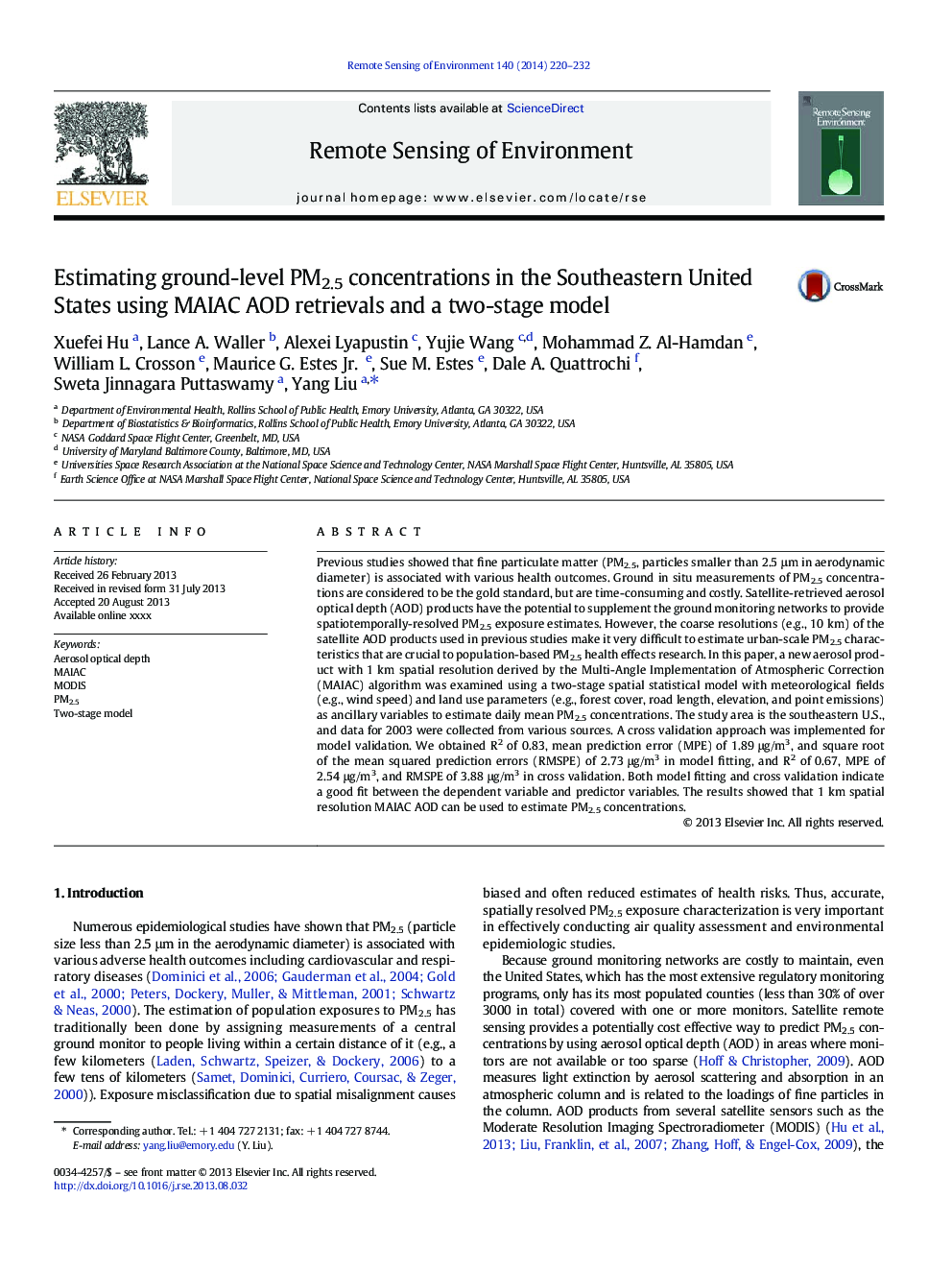| Article ID | Journal | Published Year | Pages | File Type |
|---|---|---|---|---|
| 6346995 | Remote Sensing of Environment | 2014 | 13 Pages |
Abstract
Previous studies showed that fine particulate matter (PM2.5, particles smaller than 2.5 μm in aerodynamic diameter) is associated with various health outcomes. Ground in situ measurements of PM2.5 concentrations are considered to be the gold standard, but are time-consuming and costly. Satellite-retrieved aerosol optical depth (AOD) products have the potential to supplement the ground monitoring networks to provide spatiotemporally-resolved PM2.5 exposure estimates. However, the coarse resolutions (e.g., 10 km) of the satellite AOD products used in previous studies make it very difficult to estimate urban-scale PM2.5 characteristics that are crucial to population-based PM2.5 health effects research. In this paper, a new aerosol product with 1 km spatial resolution derived by the Multi-Angle Implementation of Atmospheric Correction (MAIAC) algorithm was examined using a two-stage spatial statistical model with meteorological fields (e.g., wind speed) and land use parameters (e.g., forest cover, road length, elevation, and point emissions) as ancillary variables to estimate daily mean PM2.5 concentrations. The study area is the southeastern U.S., and data for 2003 were collected from various sources. A cross validation approach was implemented for model validation. We obtained R2 of 0.83, mean prediction error (MPE) of 1.89 μg/m3, and square root of the mean squared prediction errors (RMSPE) of 2.73 μg/m3 in model fitting, and R2 of 0.67, MPE of 2.54 μg/m3, and RMSPE of 3.88 μg/m3 in cross validation. Both model fitting and cross validation indicate a good fit between the dependent variable and predictor variables. The results showed that 1 km spatial resolution MAIAC AOD can be used to estimate PM2.5 concentrations.
Related Topics
Physical Sciences and Engineering
Earth and Planetary Sciences
Computers in Earth Sciences
Authors
Xuefei Hu, Lance A. Waller, Alexei Lyapustin, Yujie Wang, Mohammad Z. Al-Hamdan, William L. Crosson, Maurice G. Jr., Sue M. Estes, Dale A. Quattrochi, Sweta Jinnagara Puttaswamy, Yang Liu,
